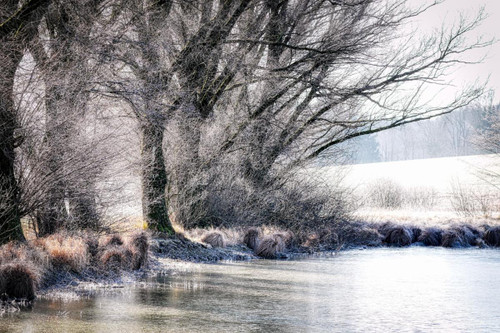Winter Preparations (Part One)
Store Pump and UV Lights
If your pump will not be used over the winter, it can be stored in any ice-free area of the pond or in a bucket of water indoors until spring comes. Any underwater lights should also be moved to an ice-free area or set along the edge outside of the pond. UV bulbs are particularly susceptible to damage from ice forming inside the chambers and bursting the delicate bulbs and quartz sleeves. It is extremely important to disconnect and drain your UV unit thoroughly before any heavy freezes. The unit should be stored in a dry location where it will not freeze over the winter.
Switch to Wheat Germ Fish Food
If you have been feeding your fish regularly, continue to do so into the fall, as long as they continue to eat the food within a few minutes. Once water temperatures fall below 60° F, it is best to switch to wheat germ-based fish food, which is easier for fish to digest. If you have not been feeding your fish regularly, it is also recommended that you begin to feed them wheat germ-based food in order to help them build up fat reserves to last through the winter.
Once the water temperature falls below 50° F, you should stop feeding the fish altogether, as by then the fish will be prepared for the winter. This usually occurs around November 1st. Even during warmer periods, do not feed your fish over the winter months, as their metabolism will have slowed down enough to be unable to properly digest the food - even if they seem hungry! You can begin feeding again once the water is consistently above 50° F.
What Not to Do
It can be tempting to just make a hole in the ice using a hammer or a stick to allow gas transfer, but you should never do this. The noise can scare your fish and cause them stress - this can harm their immune system, which is already weakened from their lowered metabolism.
One trick that we've seen that doesn't always work as intended is using rubber balls or other floating objects to keep a hole in the ice. However, you really shouldn't use this technique, as it is unreliable and can cause headaches down the line. Instead, you should make sure to have a de-icer, which will be covered in part two of this guide.

 US Dollars
US Dollars

